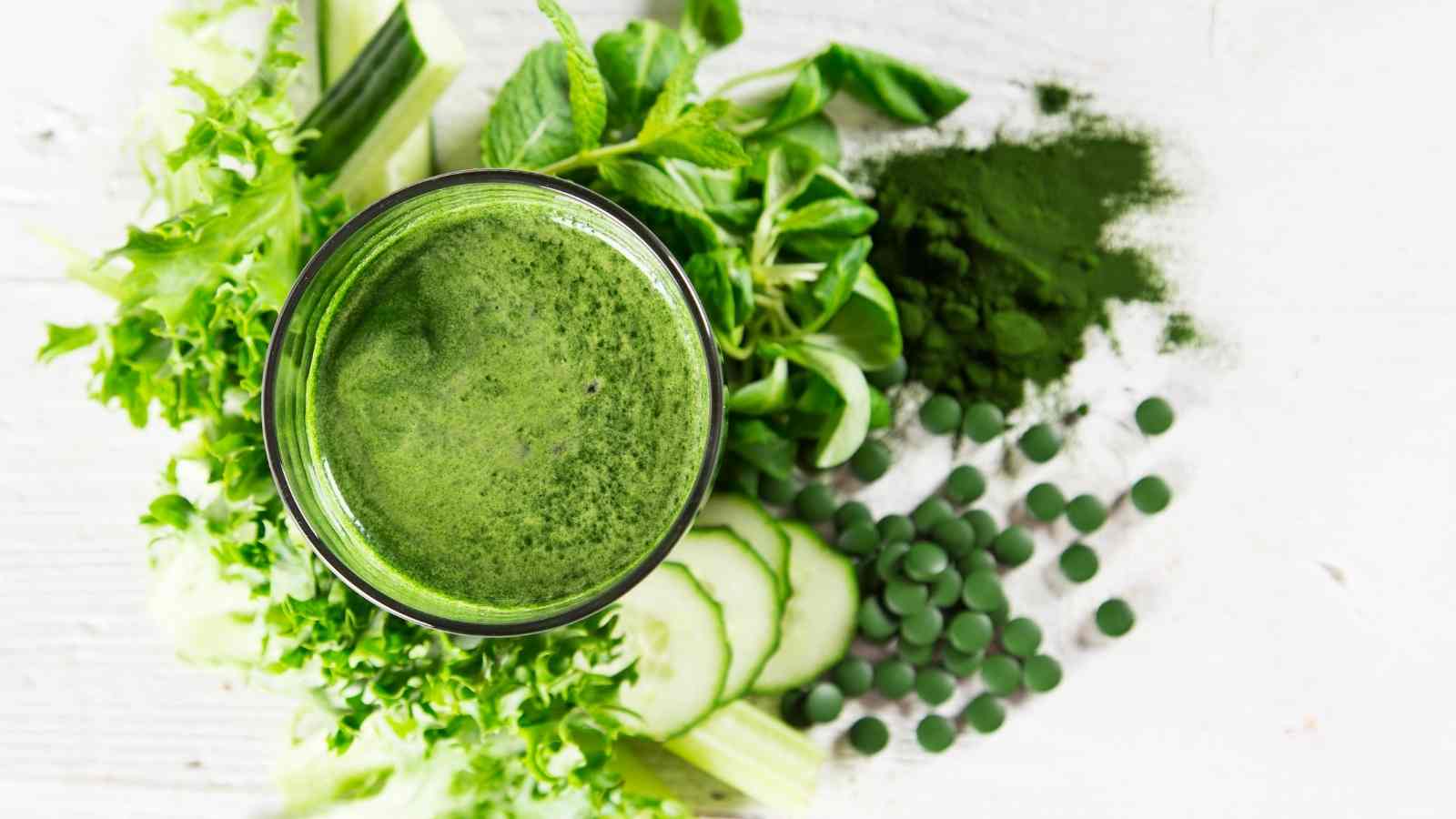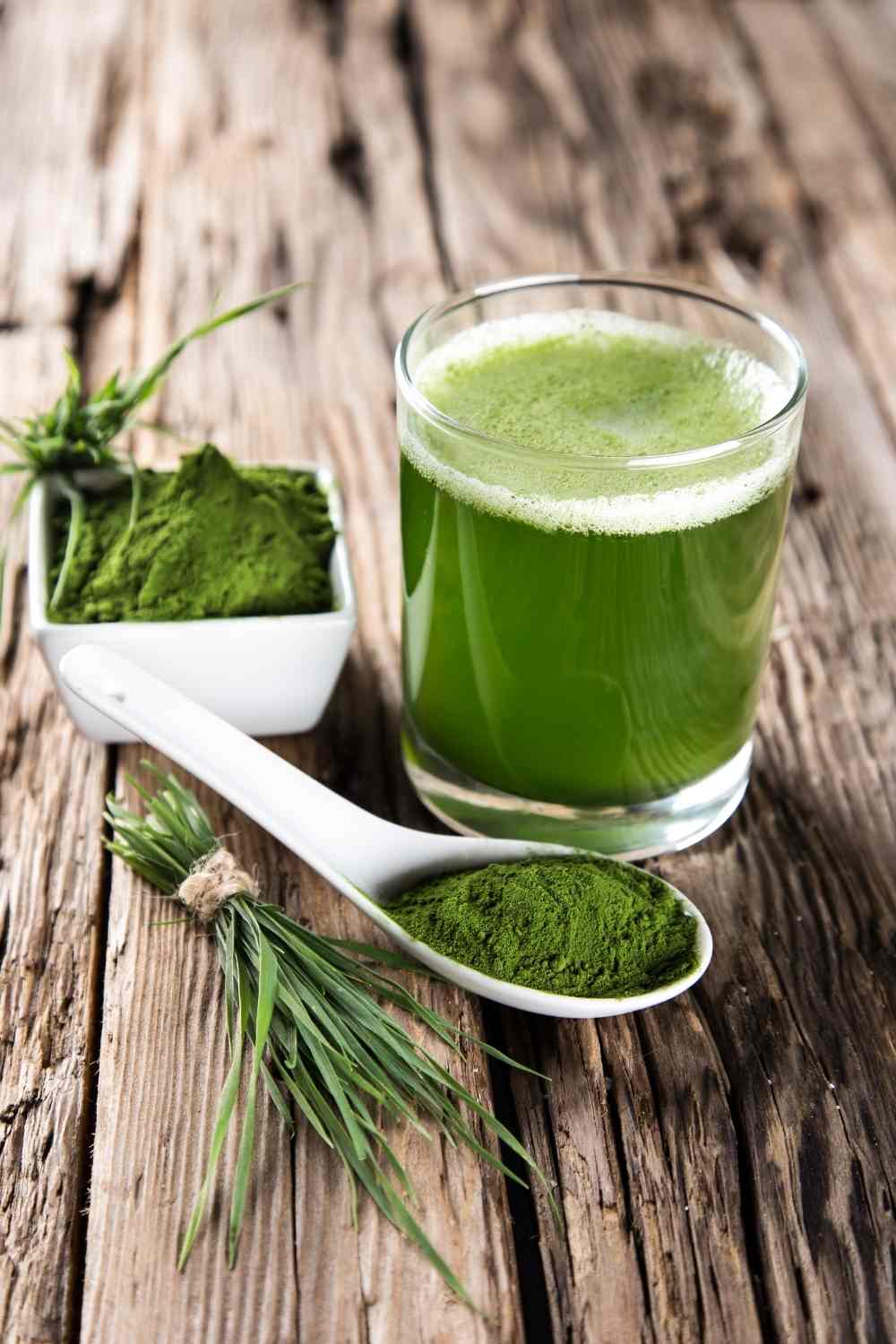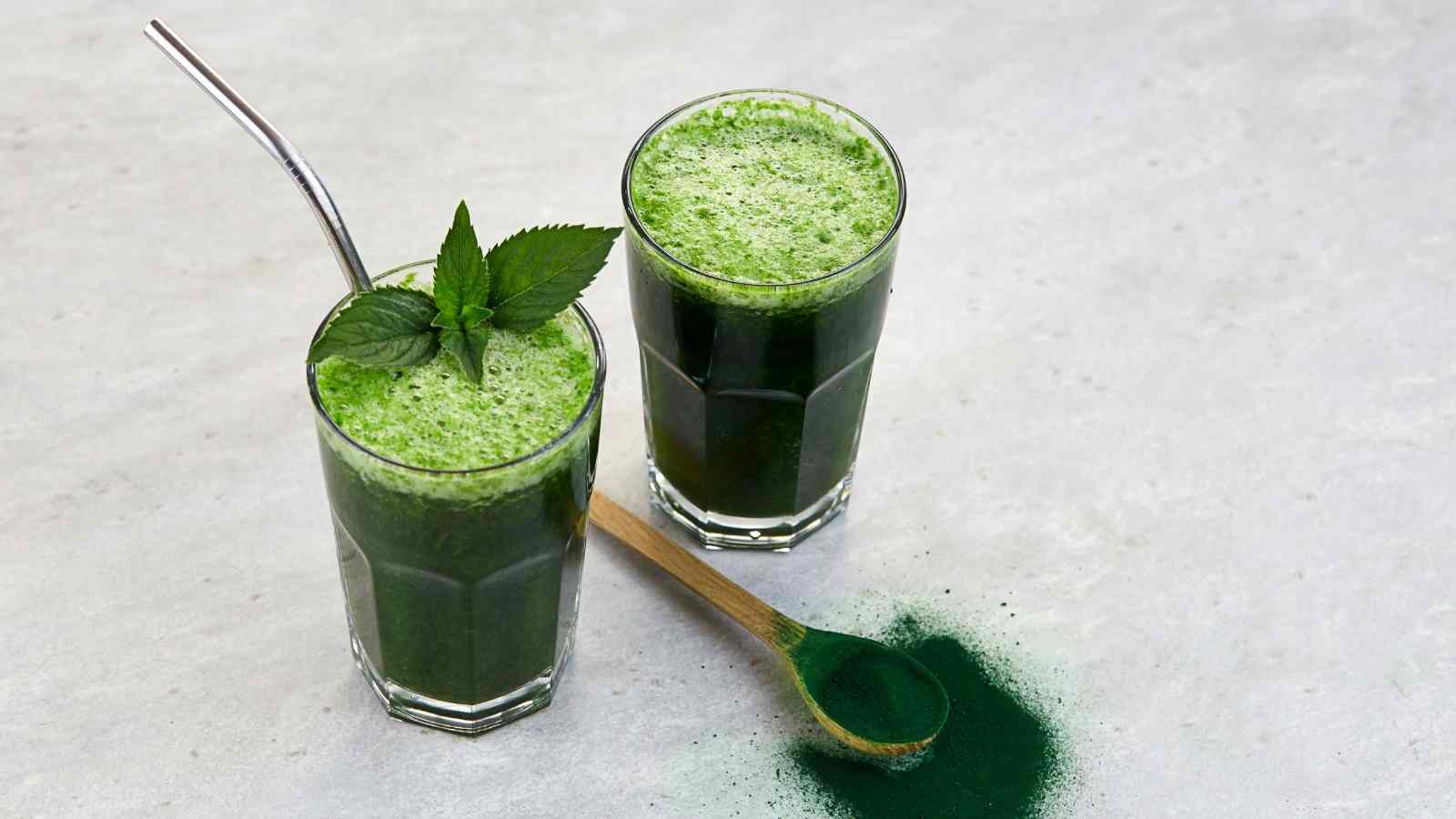It's a tiny, green, and nutrient-dense plant. What exactly are we discussing?
Exactly! What you should know about the mega algae chlorella!
Is chlorella something you've heard of before? But do you have a clear understanding of what it is?
Throughout today's piece, we'll be focusing on algae, which we believe needs more attention. We'll go through what chlorella is, how it develops, and what advantages it may provide us in the future.
So, are you ready to include more GREEN into your life? Then let's get this party started!

What exactly is Chlorella?
Truly remarkable, but this algae, which has just recently attracted widespread attention, is actually one of the oldest plants on the earth, dating back millions of years. Chlorella, on the other hand, has been around for 2 million years.
It is a single-celled green alga that derives its green colour from the presence of chlorophyll.
Chlorella's requirements for growth and reproduction are minimal: carbon dioxide, sunshine, certain nutrients, and water. That's all there is to it!
The term chlorella is derived from the Greek word chloros, which means "green," and the Latin word ella, which means "little." The alga cannot be seen with the naked eye since it is a minuscule and very sophisticated single-celled creature that is too small to see. This microsphere has a diameter that may range between 2 and 10 micrometres in size.
Small in stature, yet tremendous in impact! Chlorella excels because it has a one-of-a-kind mix of beneficial nutrients for the human body.
What is the process through which chlorella grows?
Chlorella is a kind of algae that grows in freshwater. Chlorella vulgaris was discovered in 1890 and is classified into three variants: Chlorella vulgaris, Chlorella lobophora, and Chlorella sorokiniana. Chlorella vulgaris is the most common of the three species. Due to its suitability for use in algae farms, Chlorella vulgaris is now the most widely grown species in the genus.
Chlorella was initially manufactured and eaten in Asia, mostly in Japan, according to historical records. Taiwan rose to the top of the world's production rankings in a short period of time.
In the modern day, however, chlorella is also being grown in Europe in labs and greenhouses under tight environmental controls.
Chlorella grows naturally in the lakes and rivers of Southeast Asia, where it requires water, warmth, and, most all, a lot of sunshine to thrive. Chlorella is a kind of algae that may be found in lakes and rivers across the world.
Since the end of World War II, chlorella has been the subject of much scientific investigation. For a long time, it was believed that chlorella may provide a solution to the world's rapidly increasing population and its consequent demand for protein.
The reason behind this is because chlorella is very easy to produce since it just need water and sunshine to thrive, and it is also extremely high in amino acids. Furthermore, chlorella has a high nutritional value per square metre, which is an essential factor to consider when picking food sources to feed the world's population.
However, it was discovered that the expense of processing chlorella to make it appropriate for human consumption was too expensive.
To be able to absorb the nutrients from chlorella, it is necessary to first break down the thick cell wall. This procedure is highly costly, and as a result, chlorella is not a cost-effective protein source appropriate for large manufacturing.
What exactly are the advantages of chlorella?
Because of chlorella's excellent nutritional profile, it has been dubbed a "superfood" by some. Although the high concentration of macronutrients and micronutrients is impressive, it is not the main reason for its popularity. Chlorella is particularly interesting due to its detoxifying and body-cleansing properties. You'll discover the following 10 health benefits of chlorella in this section:
Jump to:
- What exactly is Chlorella?
- What is the process through which chlorella grows?
- What exactly are the advantages of chlorella?
- 1. It is an excellent source of protein.
- 2. Antioxidants for the prevention of ageing
- 3. It is rich in minerals
- 4. A dependable vitamin distributor
- 5. Fatty acids in the omega-3 range
- 6. Heavy metal detoxification
- 7. It has a reviving and revitalising impact
- 8. It regulates the action of the digestive tract
- 9. Heart protection is essential
- 10. It has the ability to improve the immune system
1. It is an excellent source of protein.
Chlorella algae has 50-60 percent protein and includes all nine necessary amino acids, making it a so-called complete protein source. It is most likely one of the most protein-dense edible "plants" on the planet. The biological value of chlorella ranges from 75 to 88 percent, which is quite high. In other words, a certain percentage of the protein in the product may be transformed into the body's own protein.
2. Antioxidants for the prevention of ageing
Chlorella is a potent antioxidant since it contains the green plant component chlorophyll. There is no plant that has more chlorophyll than this one! Every single cell in the body benefits from the chlorophyll included in chlorella, which boosts both its defence and its regeneration ability over time.

3. It is rich in minerals
Chlorella is a real multi-talent in every sense of the word! This food contains a wide variety of minerals, including iron, magnesium, zinc, copper, potassium, calcium, and folic acid, among others. The use of chlorella on a regular basis ensures that you get the highest possible supply of the minerals indicated.
4. A dependable vitamin distributor
Chlorella includes vitamin C and B vitamins, which may help to maintain the health of one's skin, hair, and nails as well. With around 100 micrograms per 100 grammes, chlorella has a disproportionately high level of vitamin B12 (cobalamin) that can be used by the body, which is otherwise exclusively found in animal products and is hence considered a superfood. The alga is one of the few plant sources of vitamin B12, and it is very nutritious.
5. Fatty acids in the omega-3 range
Chlorella has 10 percent fat, with omega-3 fatty acids accounting for the majority of the fat. Only 3 grammes of chlorella provide 100 mg of omega-3 fatty acids. Conscious use of omega-3 fatty acids has been shown to lower cholesterol levels and reduce the risk of cardiovascular disease.
6. Heavy metal detoxification
Heavy metals are elements that exist naturally in the earth's crust and are used in many industries.
They enter the human body by the inhalation of air, drinking water, and eating food. Heavy metals are present in our environment on a daily basis. Chlorella may assist your body in dealing with the exposure more effectively. One advantage of chlorella algae is that they have the ability to mobilise toxins and heavy metals from connective tissue, and on the other hand, by binding these toxins to their cell walls, they may also cause these toxins to be expelled.
Chlorella binds to heavy metals, including some of the most poisonous, such as lead, cadmium, mercury, and uranium, preventing them from being absorbed into the circulation. Chlorella is found in a variety of foods, including salads and soups.
7. It has a reviving and revitalising impact
Chlorella increases the synthesis of red blood cells and helps to make the muscles thicker and stronger. As a result, it is particularly well-liked among sportspeople. It also has anti-fatigue and anti-stress properties. The nutrients iron and vitamin B12 are required for the production of red blood cells. Vitamin B12 plays an important role in cell division throughout this metabolic process. In order for your body to create enough red blood cells, you must ensure that you have a sufficient quantity of vitamin B12. Red blood cells are responsible for delivering oxygen to your organs and muscles. They are thus not only necessary for the proper functioning of your muscles, but they are also necessary for your survival.

8. It regulates the action of the digestive tract
The intestines perform a variety of critical activities. It is a critical component of the immune system, as well as a critical component of the central nervous system. A variety of problems may arise when the stomach or intestinal function is hampered in any way.
Microalgae seem to have a beneficial influence on the flora of the digestive tract. When Chlorella vulgaris was consumed, it was shown to increase the amount of lactobacilli in the body. By producing lactic acid, these bacteria help to maintain a neutral pH in the intestinal tract, which aids in digestion while also defending against dangerous infections.
Chlorella has been shown to have a beneficial impact on the intestinal mucosa and the function of the intestinal barrier. Bacteria, bacterial toxins, and other potentially hazardous chemicals are prevented from entering the circulation in this manner.
9. Heart protection is essential
Chlorella has been shown to decrease blood pressure and harmful cholesterol levels in people. Cholesterol is a fat-like molecule that circulates in the bloodstream. There is a differential between LDL cholesterol and HDL cholesterol. LDL cholesterol is the bad cholesterol, and HDL cholesterol is the healthy cholesterol. An elevated amount of LDL cholesterol is connected with a higher risk of atherosclerosis and cardiovascular disease. In contrast, high HDL cholesterol levels lower the chance of developing cardiovascular disease. The maintenance of a healthy LDL cholesterol level below or at an acceptable level is consequently critical for overall well-being. Chlorella has been shown to reduce harmful LDL cholesterol.
10. It has the ability to improve the immune system
Your immune system contributes to your overall health by protecting you from infections.
A complicated system made up of various systems and cells, it is activated when an intruder enters your body and begins to cause damage. Chlorella has been demonstrated in multiple trials to improve immune function by enhancing the activity of various components of the immune system, according to the researchers.




